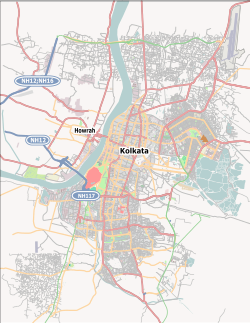| Ramakrishna Math Baranagar | |
|---|---|
 Entrance of Baranagar Math | |
| Alternative names | Baranagar Math |
| General information | |
| Status | Active |
| Type | Heritage place, museum, branch of Ramakrishna Mission |
| Address | 125/1, Pramanick Ghat Road, Baranagar, Kolkata 700036 |
| Country | India |
| Coordinates | 22°37′54.7″N88°22′3″E / 22.631861°N 88.36750°E |
| Construction started | 1886 |
| Renovated | 1973 |
| Owner | Belur Math |
| Website | |
| baranagarmath | |
Baranagar Math [a] (Baranagar Monastery) or Ramakrishna Math, Baranagar was the first monastery of Ramakrishna Order. In September 1886, after the death of Ramakrishna, when his devotees stopped funding, Swami Vivekananda (then known as Narendranath Datta) and other disciples of Ramakrishna decided to make a dilapidated house at Baranagar their new math . [1] [2] The house crumbled to dust in 1897. In 1973 Vivekananda Math Samrakshan Samity was formed, which attempted to preserve the area. In 2001, the possession was handed over to Belur Math authority, which soon after declared it as one of its official branches. The restoration and development work of the area is still ongoing. [3]





